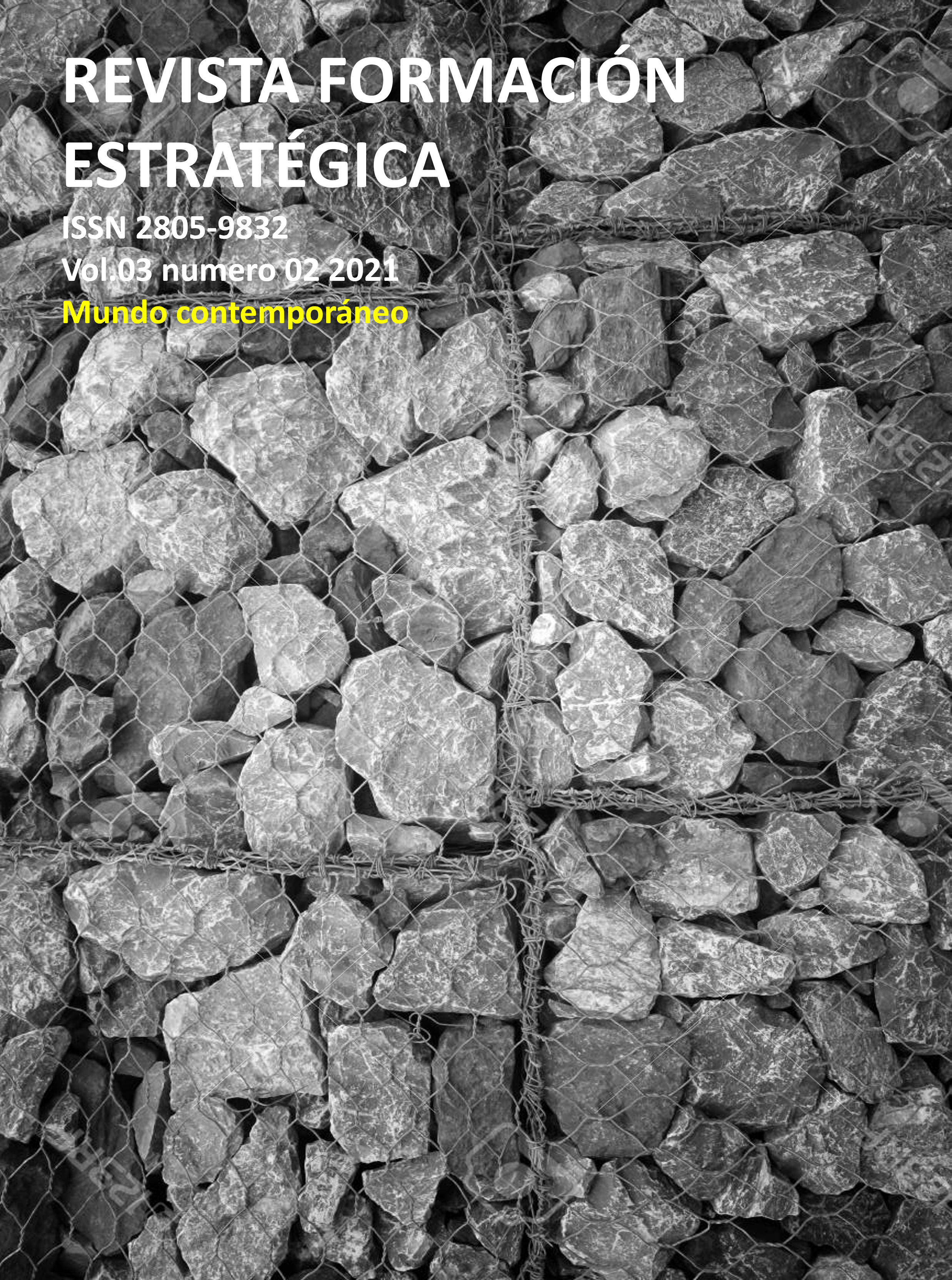Abstract
This article analyzes the positive and negative aspects of the modification of a CA 80-100 asphalt cement with the addition of two plastomeric polymers, such as PVC and LDPE, thus forming the MDC-2 asphalt mixture, by means of scientific studies carried out in Colombia, in the cities of Bogotá and Medellín, whose general and rheological characteristics are contrasted based on the tests established by INVIAS. The results obtained allowed identifying that the addition of these plastomeric polymers increases and improves the chemical, mechanical and rheological properties, as well as allowing the reuse of waste that can be used for the elaboration of these asphalt mixtures; However, the asphalt mixture modified with PVC shows a better mechanical resistance, a higher resilient modulus, and a higher resistance to deformation under load cycles; this denotes that the feasibility of using this polymer in asphalt cements gives it a lower susceptibility to the commonly found failures, allowing an increase and a prolongation of the useful life of the pavements developed with this asphalt mixture modified with PVC waste. Unlike the asphalt mix modified with LDPE, which although it shows an improvement in the same evaluated aspects of the PVC mix, with respect to a conventional asphalt mix, it does not achieve a better performance than the PVC modified mix.
References
Galvis Ariza, R. (2006). Mezclas asfálticas y patología de las mismas (trabajo de grado). Universidad del Quindío, Armenia, Colombia. https://bdigital.uniquindio.edu.co/bitstream/handle/001/5947/FINAL%20DE%20PASANTIA.pdf?sequence=1&isAllowed=y
De la Fuente Utrilla, A. (2007). Diseño de una mezcla asfáltica de alto rendimiento para baches superficiales y profundos: tramo carretero Villahermosa - Teapa. (Tesis Licenciatura). Universidad de las Américas Puebla, Departamento de Ingeniería Civil y Ambiental, Escuela de Ingeniería y Ciencias, Puebla. Retrieved from Bibliotecas UDLAP: http://catarina.udlap.mx/u_dl_a/tales/documentos/lic/de_l_a/
Mosos, A. A. F., Mosos, G. C. A., & Gómez, M. J. H., (2018). Estudio de asfaltos y mezclas asfálticas modificadas con aceite residual de motor. Trabajo de Grado. Universidad Católica de Colombia. Facultad de Ingeniería. Programa de Ingeniería Civil. Especialización en Ingeniería de Pavimentos. Bogotá, Colombia. https://hdl.handle.net/10983/22533
Lozano Castellanos, I. C., & Reyes Tafur, C. A. (2020). Evaluación del comportamiento de un asfalto modificado con Policloruro de Vinilo (PVC) y Grano de Caucho Reciclado (GCR) (Trabajo de grado). Universidad de Ibagué, Ibagué, Colombia. https://repositorio.unibague.edu.co/bitstream/20.500.12313/1881/1/Trabajo%20de%20grado.pdf
Garnica Anguas, P., Flores Flores, M., Gómez López, J. A., & Delgado Alamilla, H. D. (2005). Caracterización geomecánica de mezclas asfálticas. https://www.imt.mx/archivos/publicaciones/publicaciontecnica/pt267.pdf
Medina, L., Muniz de Farias, M., & Recarey, C. (2020). Evaluación reológica y mecánica de un aglutinante asfáltico modificado por polímeros. Revista ingeniería de construcción, 35(2), 170-181. https://dx.doi.org/10.4067/S0718-50732020000200170.
Vargas, Xiomara, & Reyes, Freddy. (2010). El fenómeno de envejecimiento de los asfaltos. Ingeniería e Investigación, 30(3), 27-44. Consultado el 21 de abril de 2022 en http://www.scielo.org.co/scielo.php?script=sci_arttext&pid=S0120-56092010000300003&lng=en&tlng=es.
Castro López, William Andrés, Rondón Quintana, Hugo Alexander, & Barrero Calixto, Juan Carlos. (2016). Evaluación de las propiedades reológicas y térmicas de un asfalto convencional y uno modificado con un desecho de PEBD. Ingeniería, 21(1), 7-18. https://doi.org/10.14483/udistrital.jour.reving.2016.1.a01
Reyes Lizcano, Fredy Alberto, Guáqueta Echeona, Catalina, Porras Salcedo, Laura Melissa, & Rondón Quintana, Hugo Alexander. (2013). COMPORTAMIENTO DE UN CEMENTO ASFÁLTICO MODIFICADO CON UN DESECHO DE PVC. Revista Ingenierías Universidad de Medellín, 12(22), 75-84. http://www.scielo.org.co/scielo.php?script=sci_arttext&pid=S1692-33242013000100007&lang=es
S. Wang, Q. Wang, X. Wu and Y. Zhang, "Asphalt modified by thermoplastic elastomer based on recycled rubber". Construction and Building Materials, Volume 93, 2015, pp. 678-684. https://www.sciencedirect.com/science/article/abs/pii/S0950061815300027
Rondón Quintana, Hugo Alexander, & Reyes Lizcano, Fredy Alberto. (2012). Evaluación de los parámetros mecánicos de una mezcla asfáltica sometida a las condiciones ambientales de la ciudad de Bogotá D.C. Revista ingeniería de construcción, 27(1), 57-74. https://dx.doi.org/10.4067/S0718-50732012000100004
Oner, Julide, & Sengoz, Burak. (2018). Effect of polymers on rheological properties of waxy bitumens. Revista de la construcción, 17(2), 279-295. https://dx.doi.org/10.7764/rdlc.17.2.279
Lozano, Diego Andrés, Molina-Gómez, Fausto, Ruge, Juan Carlos, Moreno-Anselmi, Luis Ángel, & Bastidas-Martínez, Juan Gabriel. (2020). Asphalts and modified dense asphalt mixtures with rubber of military boots. DYNA, 87(212), 120-128. https://doi.org/10.15446/dyna.v87n212.78135
Giacomucci, L., Raddadi, N., Soccio, M., Lotti, N., & Fava, F. (2020). Biodegradation of polyvinyl chloride plastic films by enriched anaerobic marine consortia. Marine Environmental Research, 158. https://doi.org/10.1016/j.marenvres.2020.104949
Pardo-Rodríguez, María Luisa, & Zorro-Mateus, Patricia Joyce Pamela. (2021). Biodegradation of polyvinyl chloride by Mucor s.p. and Penicillium s.p. isolated from soil. Revista de Investigación, Desarrollo e Innovación, 11(2), 387-399. Epub September 16, 2021.https://doi.org/10.19053/20278306.v11.n2.2021.12763
Coutinho, F. M. B., Mello, I. L., & Santa Maria, L. C. (2003). Polietileno: Principais tipos, propriedades e aplicações. Polímeros. Ciência e Tecnologia, https://www.redalyc.org/articulo.oa?id=47043582009
Vásquez Varela. (2006). PAVEMENT CONDITION INDEX PCI, Para pavimentos asfálticos y de concreto en carreteras https://sjnavarro.files.wordpress.com/2008/08/manual-pci1.pdf
Instituto Nacional de Vías – INVIAS, (2012). NORMAS Y ESPECIFICACIONES, “Norma INV E- 724-13” Bogotá D.C., Colombia.
Instituto Nacional de Vías – INVIAS, (2012). NORMAS Y ESPECIFICACIONES, “Norma INV E- 702-13” Bogotá D.C., Colombia.
Rus Enrique Arias. (2021). Investigación cualitativa. Economipedia. https://economipedia.com/definiciones/investigacion-cualitativa.html
Rondón Quintana, Hugo, Fernández Gómez, Wilmar, & Castro López, William. (2010). Evaluación de las propiedades mecánicas de una mezcla densa en caliente modificada con un desecho de polietileno de baja densidad (PEBD). Revista ingeniería de construcción, 25(1), 83-94. https://dx.doi.org/10.4067/S0718-50732010000100004
Rondón-Quintana, Hugo A., & Reyes-Lizcano, Fredy A.. (2011). Evaluación de las Propiedades Mecánicas de una Mezcla Densa en Caliente Modificada con un Desecho de PVC. TecnoLógicas, (27), 11-31. Retrieved June 21, 2022, from http://www.scielo.org.co/scielo.php?script=sci_arttext&pid=S012377992011000200002&lng=en&tlng=es.

This work is licensed under a Creative Commons Attribution 4.0 International License.

